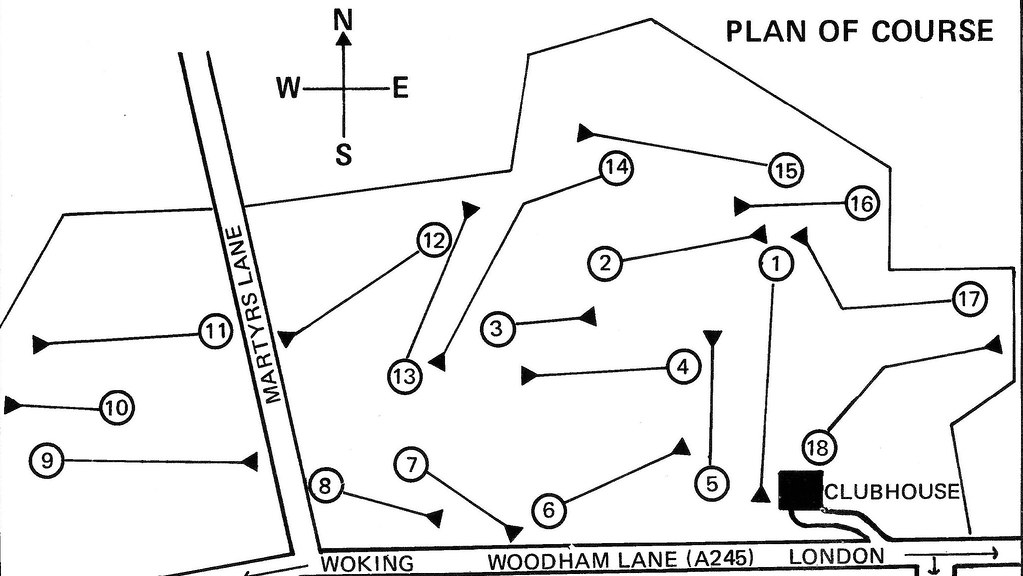

Despite the many elements which combine to make the course better than its sum parts, it is the bunkering which is New Zealand’s standout feature. It has long been my belief that Walton Heath’s bunkers are the best in the heathlands. According to Patric Dickinson “They are curiously, aggressively, artificial looking.” While not nearly as austere as Walton’s Heath’s pits, one could say that New Zealand’s are alarmingly charming, but just as effective and thus the equal of Fowler’s maiden design. Because both courses are fairly flat the bunkers take on a more prominent strategic role and may explain why the architects seemed to take great care in creating thoughtful hazards which in the best of traditions guard rather than frame greens. There is a fair amount of wonderful architecture that is more often than not dismissed as “flat” and therefore uninteresting. This sort of attitude will lead golfers to miss out on one of the true gems of London.
Much of New Zealand is the product of Mure Fergusson’s 1895 design which was unique for its day in that it was carved out of a forest. Fergusson continued to make refinements over the following 30 years as secretary of the club. Not long after his death Tom Simpson was called in to make significant changes. Being a former partner of Herbert Fowler and a member of Woking gave Simpson first hand knowledge of good design principles. Among the alterations were the addition of the great green complexes for #s 17 & 18, the short 3rd hole and a grand bunkering scheme for the entire course. Consequently its fair to state that New Zealand is the product of both these gentlemen.
The 1st, a tough opener that uses the angles well in shaping the strategy of the hole. Right from the get go the golfer can see the relationship between the turn of the fairway and the placement of the bunker just shy of the green. This is a theme throughout the round.
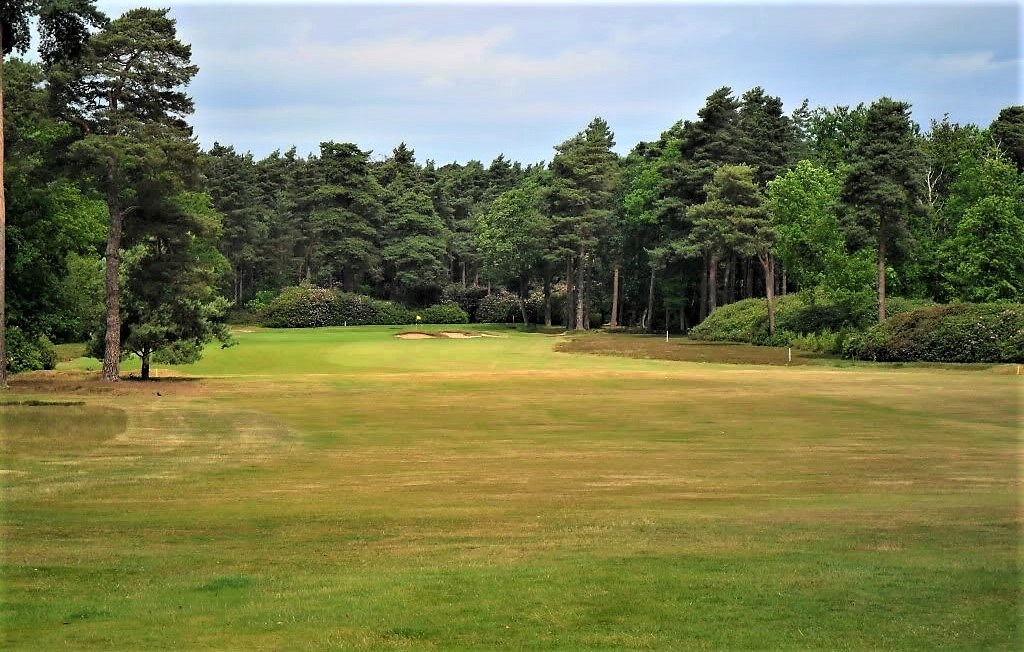
Although New Zealand is relatively short on yardage, it starts out in stout fashion. The second is another two-shotter which is often into the prevailing wind. The drive progressively narrows for the player looking to hit a long ball. The centre-line bunker completely dictates the strategy of the hole. The bunker is deceptively large, but there is room for the golfer to bounce shots onto the green should conditions call for it. This sort of design is Simpson at his best and a re-occurring theme. The bunker guarding the right side of the green exemplifies the difference in quality and placement between the two bunkers. Fortunately, New Zealand doesn't have too many of this slap dash sort.
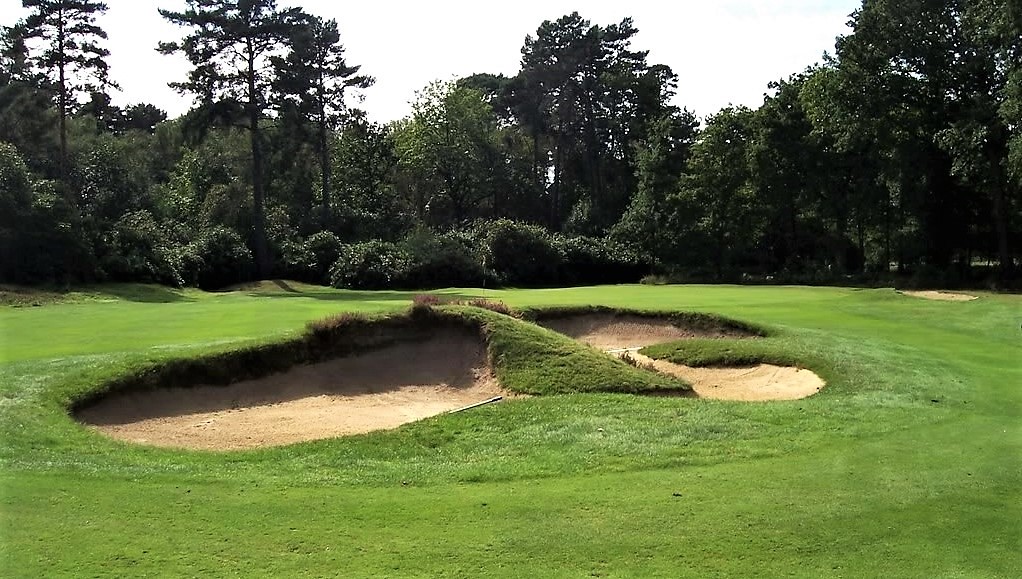
The short 3rd is trickier than looks suggest, but we move to the excellent 4th, this hole probably has the most elevation change of any hole on the course. The slope of the fairway leading toward the bunker is visually intimidating, but only the longest hitters can reach the sand from the tee.

Another great bunker! Notice how the flag is only half visible. The green runs away from the player, but there is all the room in the world to bounce one in. That doesn't however, make judging this approach any easier.

The second one-shotter in five holes, the 5th takes us back to the house. I like the idea of a short loop and a long loop rather than equal halves. The club is a great example of understated elegance; very old fashioned without being stuffy.
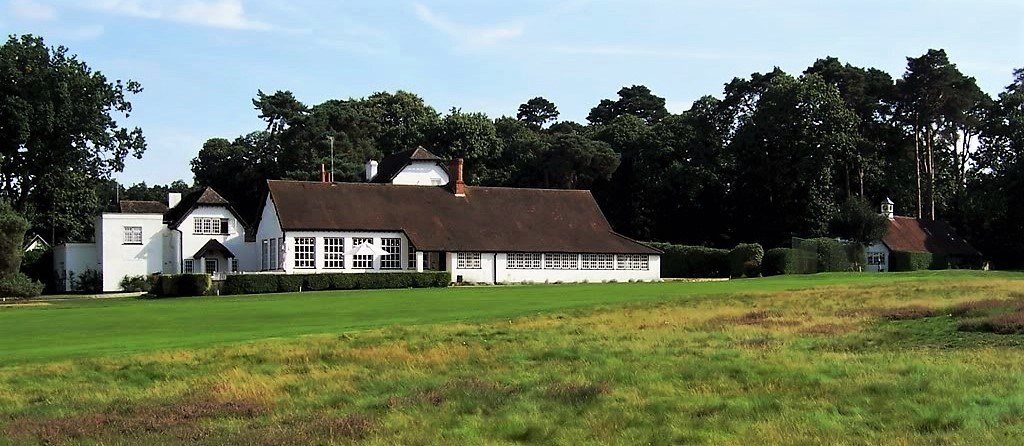
The 6th is one of the half dozen or so par 4s that can play very long especially into the prevailing wind. The hole used to feature one of the several camouflaged bunkers to be found at New Zealand in the right heather. The bunker is now more visible from the tee, but still menacing.

The area short of the green is scooped out and shoves shots intended to bounce in to the right...which means we must challenge the right fairway bunker off the tee to have options for the approach.
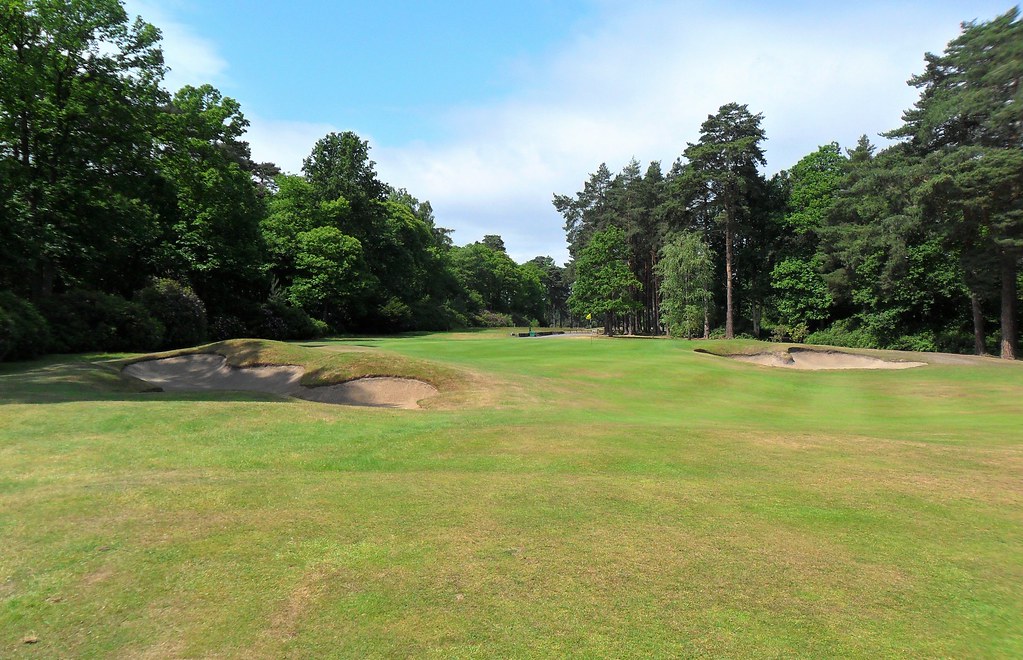
A great par 3 among a fine set of short holes, the 7th is a good example of what can be achieved on flat land. The left and right bunkers create all the interest necessary. The right bunker has the added appeal of acting as a greenside bunker for #13. There must be 30 yards or a shade more from the left bunker to the flag. The flag to the right is #13.
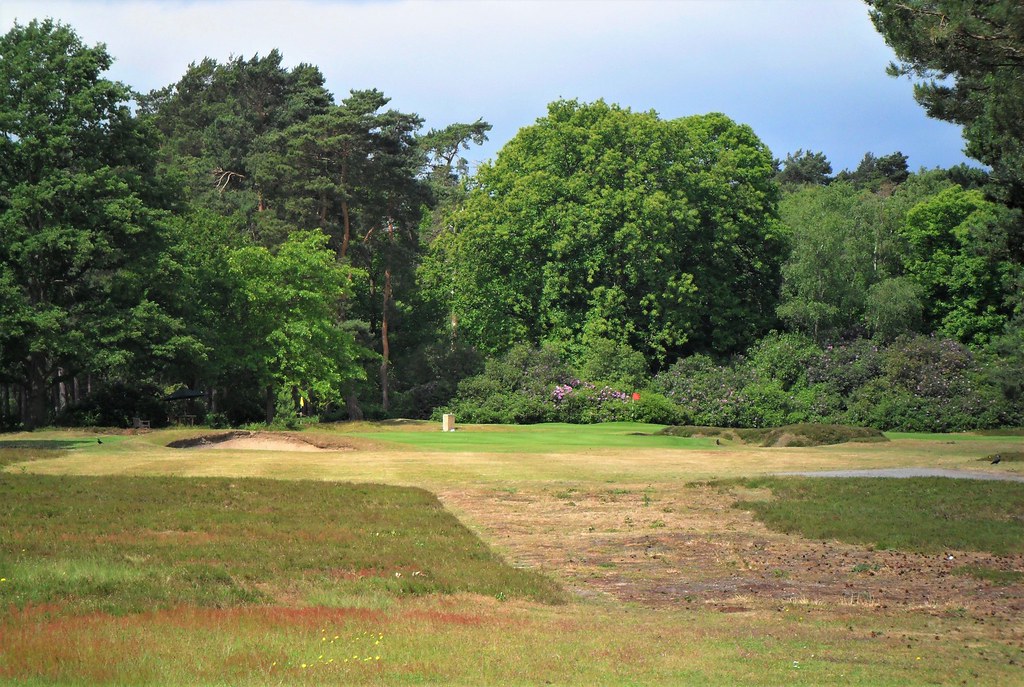

The right greenside bunker with #13 in the background.
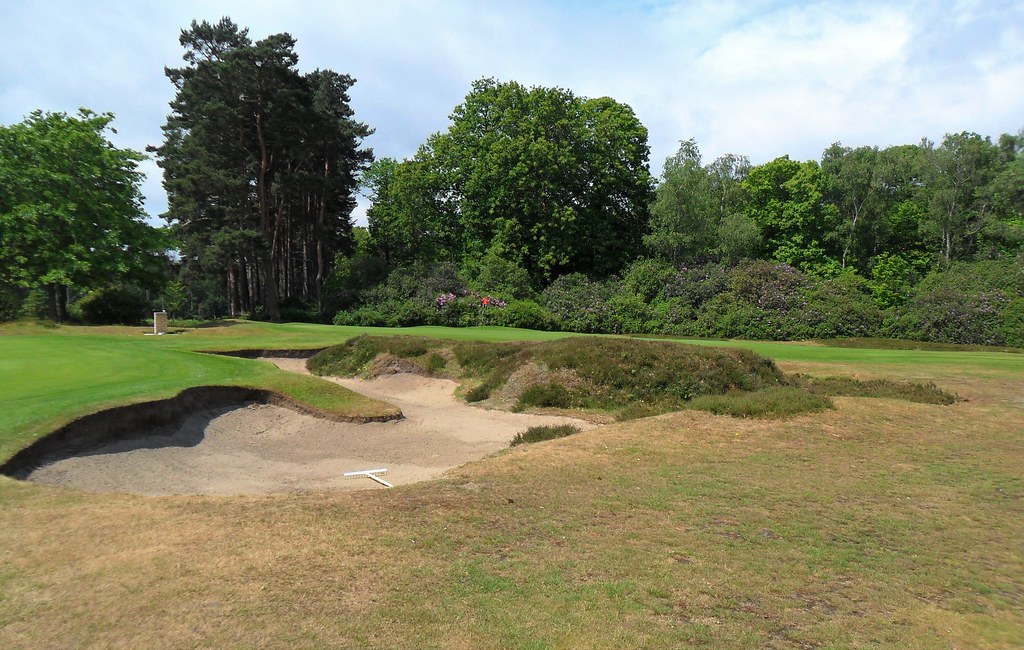
The following four holes are all solid, but the high points are the bunkers. The blind 8th is the one hole in this bunch which doesn't fill my ticket. The goal of the ninth hole is to carry the right side bunkers and thus gain the optimum angle of approach or one can scoot a ball past them.
The 10th is a rather awkward length hole of 120 yards to very good raised green. As on the 16th, the heather works particularly well as dead ground.

Simpson was very creative in the angling of his bunkers. Many are on a diagonal line jutting across the line of play. This feature makes it difficult to ascertain just where the landing zone is for the aggressive play. Notice how far short this bunker is of the 11th green. There is plenty of room to challenge the bunker and stay right to take advantage of the right to left slope, but the bunker angle obscures the view.

The three isolated holes on the far side of Martyr's Lane are not of the same cailbre as those across the road at Worplesdon. However, once we return to the main section of the property the stretch of holes leading back to the house are what make New Zealand better than the run of the mill good course. Features such as the slight drop on the front right of the green are generally not as obvious on the first 11 holes. Below is a side-look at the bunker/hollow complex to the right of the 12th green.
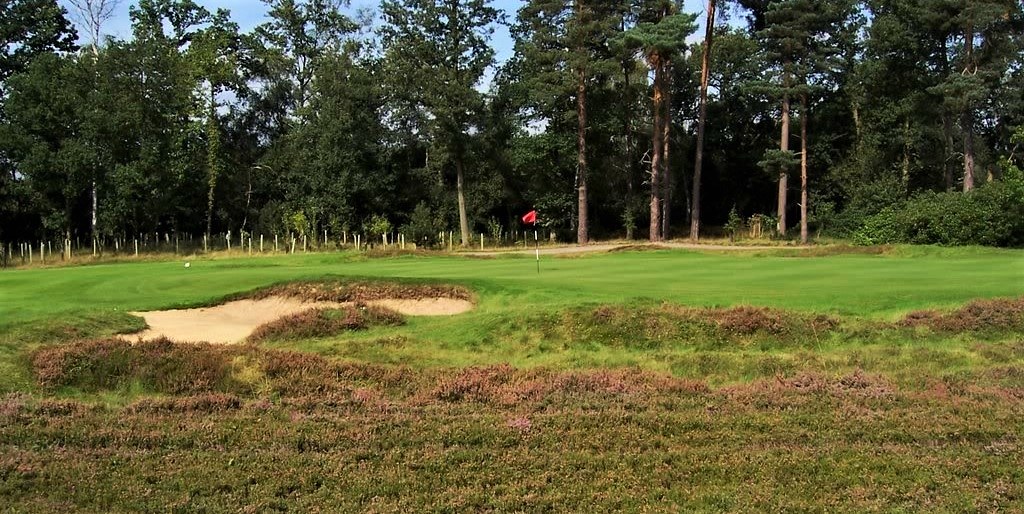
Thirteen has a very clever pair of centre-line bunkers, one of which is hidden behind the other making the carry up the hill longer than it looks. As on the previous hole (but more pronounced), there is a wee swale protecting the front right of the green. This short par 4 is exceedingly well conceived.
[img width=800https://c1.staticflickr.com/5/4569/37743084364_e24120f8ce_b.jpghttp://http://
http://New Zealand's sole par 5, the 14th is reachable, but not without risk.

A hidden Cat Woman eyes bunker protects the right side of the fairway. Just over this bunker is fairway, perhaps this is an idea which could be used on other holes to increase the importance of tempting players to challenge the bunkers.
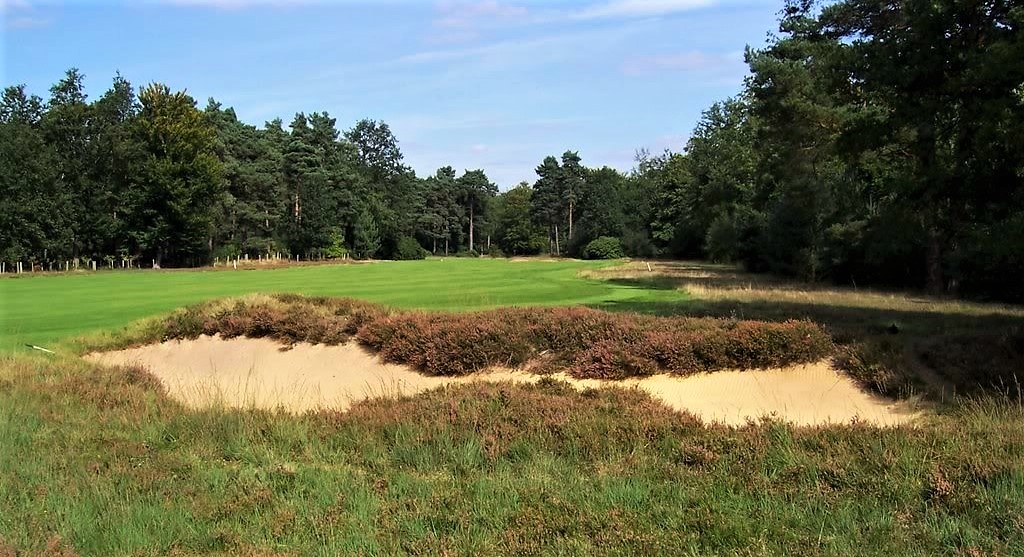
In a bit of a twist (similar to Littlestone's 16th), it is better to be on the outside of the dogleg as this bunker guards the approach from the right. The green slopes to the back, which is the best place to miss as all the trouble is near the front of the green.

The 15th sees the fairway bisected by bunkers on either side of the fairway. Little Lizzy isn't camera shy!
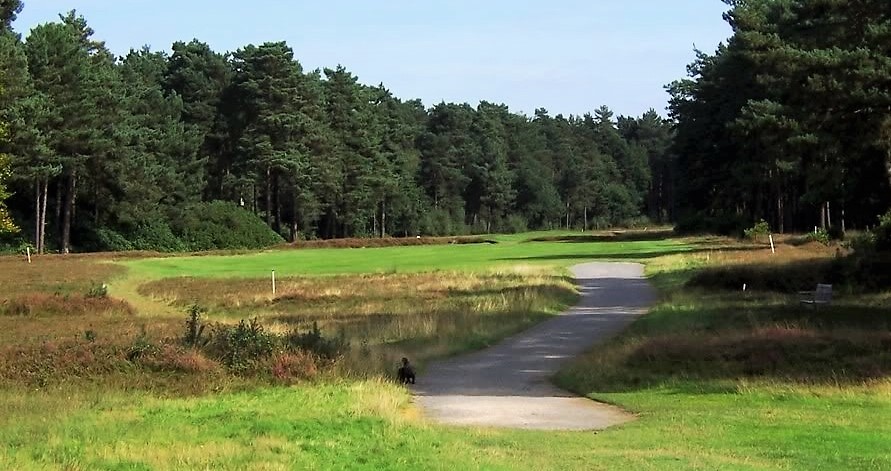
Yet another centre-line bunker. Pay close attention...

...it is another that is much larger than it looks from a distance. The orientation of this bunker is unusual as well. Notice the bold contouring with the wing on the back left of the green. Its well designed to make the guy avoiding the front right bunker have to risk a 3 putt, but still offer a bailout shot from the right.

#16, the final par 3, is approximately a 180 yard carry over the heather. The photo accurately depicts the obscured view of the green one has from the tee. Once again, clever bunkers partially conceal the target and distract the golfer from the goal.
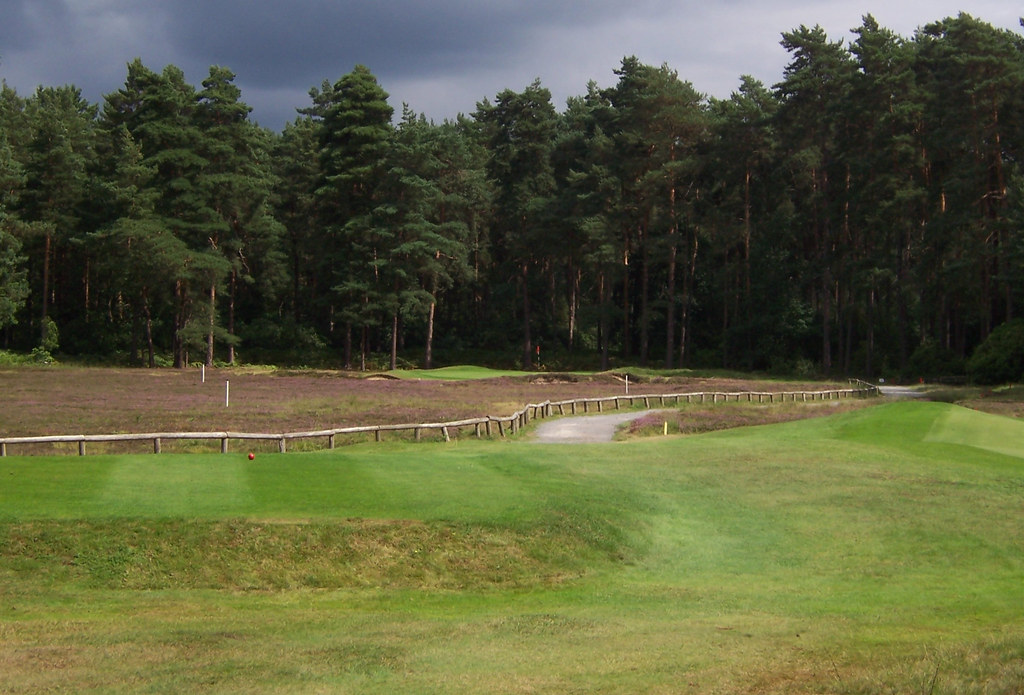
A closer look.
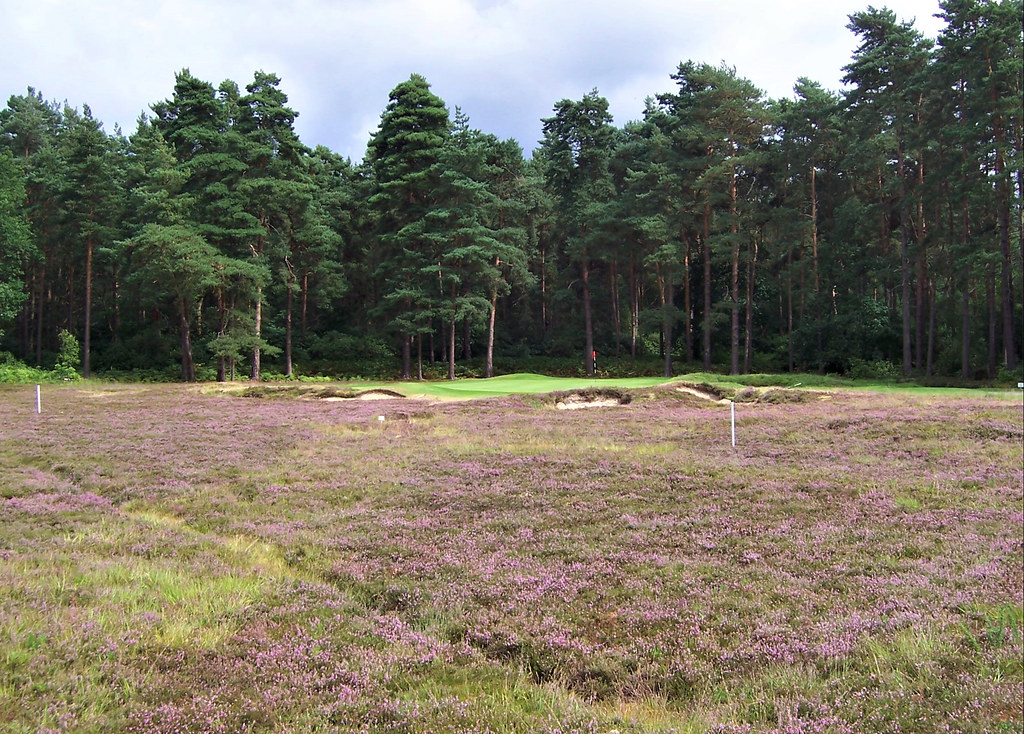
The renovated right hand bunker...
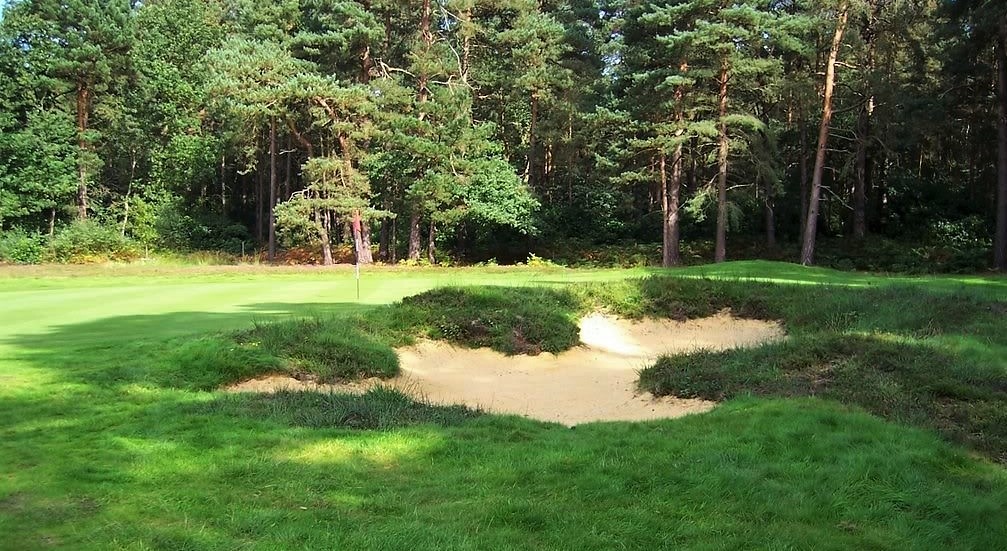
...and a look at the severity of New Zealand's heather.

A sharp legger left, the 17th is an awkward hole which works around an adjacent property. The landing zone for this forced layup is a bit tight and a few trees could stand to come out. In fact, other than the fairways being a bit tight given the harsh penalty of playing from heather, the only other concern I have is the number of trees and undergrowth. Many hundreds could come out without anyone noticing, but it must be noted that due care is necessary to maintain a proper sound block. New Zealand has a very secluded feel yet the M25 is only a few miles away.
A Simpson sketch of the 17th circa 1931.
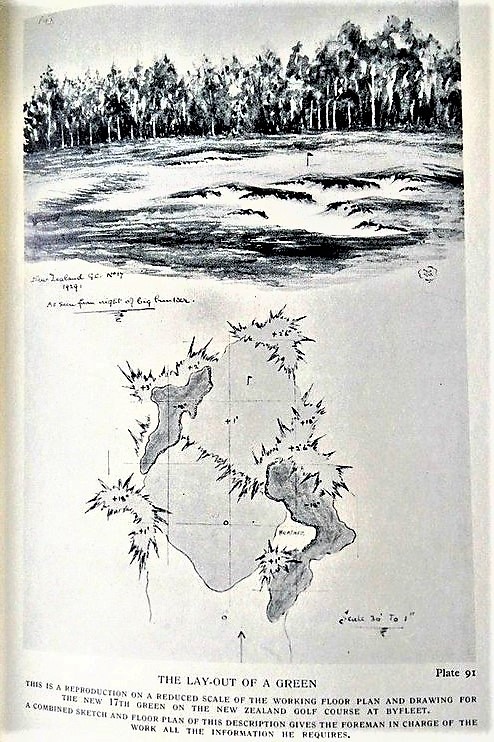
The photos don't accurately depict the unforeseen kick to the left many golfers experience at the green. An alley falling away from the green leads these astray approaches directly to the rear left bunker. This sort of design reminds the author of some links bunkers such as at Carnoustie. Many play much larger than their actual size because of their gathering nature. Below is a view of the green from well beyond the approach area.

This view of the green complex shows off the movement of the land and the deceptively large right green-side bunker.

The home hole doesn't disappoint. Like the twelfth, this is another tee shot free of sand. As an example of the tree problem, trees down the left block the view of Simpson's handiwork from the tee and a few could be removed without compromising the dog-leg strategy of the hole. In fact, a view of the flag could act as an enticement to play unwisely, a design strategy which I have long admired. Below is New Zealand's response to the Valley of Sin.
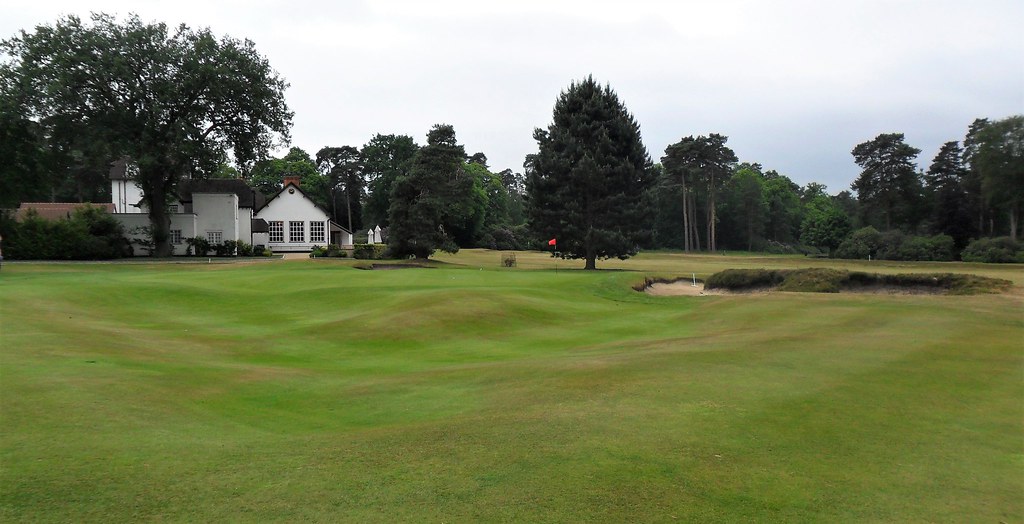
The clubhouse has bags of charm and the course is demandingly honest, but some readers may be curious about the vital statistics; a par of 68 and a breath under 6000 yards. These numbers will strike many as a bit on the light side, however, don’t be deceived. The story of New Zealand is discovered in its playing and there are three All England candidates; #s 6, 7 & 16. There is a premium placed on hitting fairways and with six holes which can take some reaching this aspect of the game is greatly rewarded in keen conditions. Additionally, there are two long par 3s, consequently, New Zealand offers plenty of challenge with medium to long irons and wood play. This sort of configuration is a wonderful example of how to combat flat bellies yet offer respite for the less gifted players.
Despite not being blessed with a rolling property, New Zealand drains exceedingly well. The flatter landscape offers a pleasantly cunning game with its many small and large swales kicking poorly judged shots into awkward recovery situations. Bernard Darwin encapsules the qualities of the club and course like no other can; “New Zealand is sui generis. It does not compete with other courses, but it sets its own standard and lives up to it.” 2015
The famed lockers.
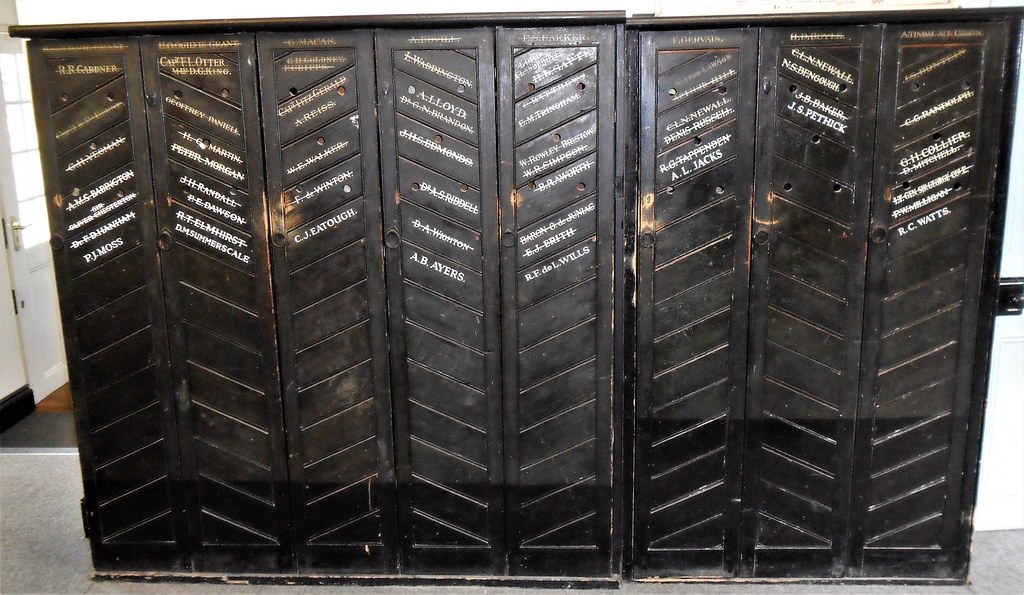
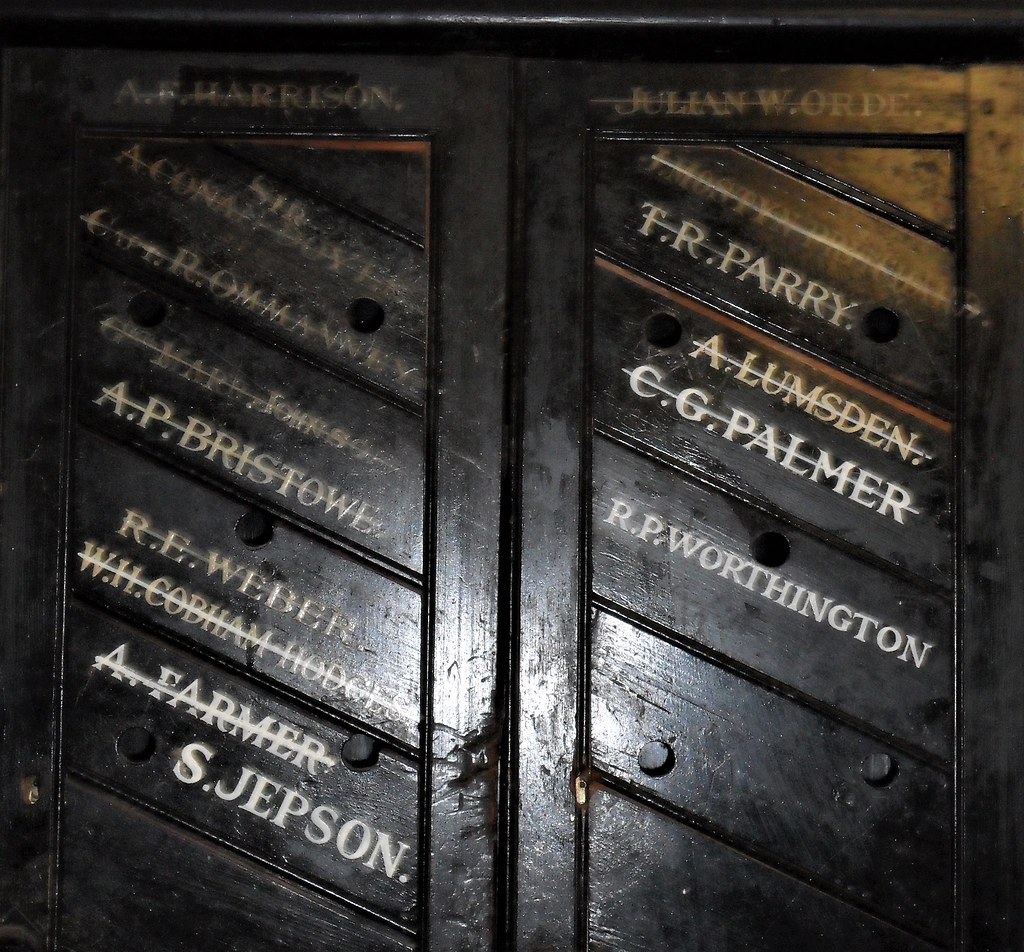
Ciao